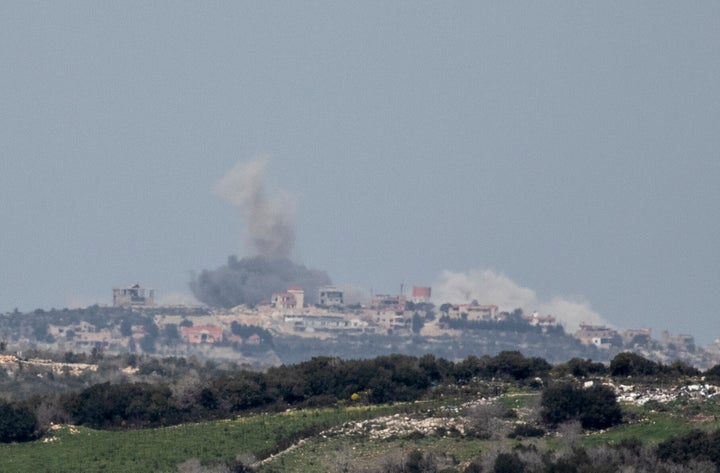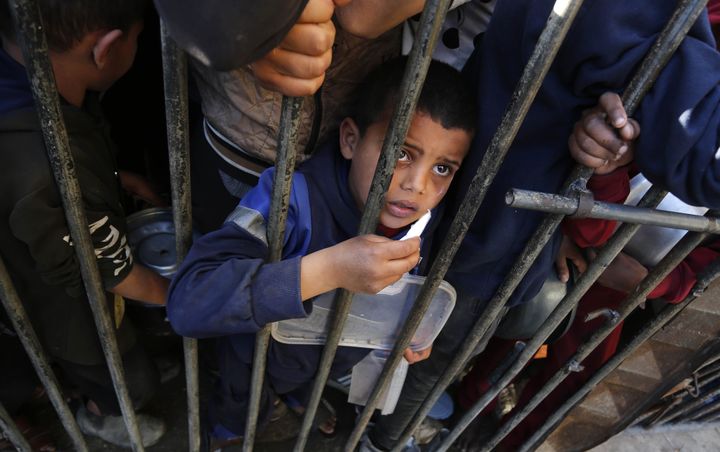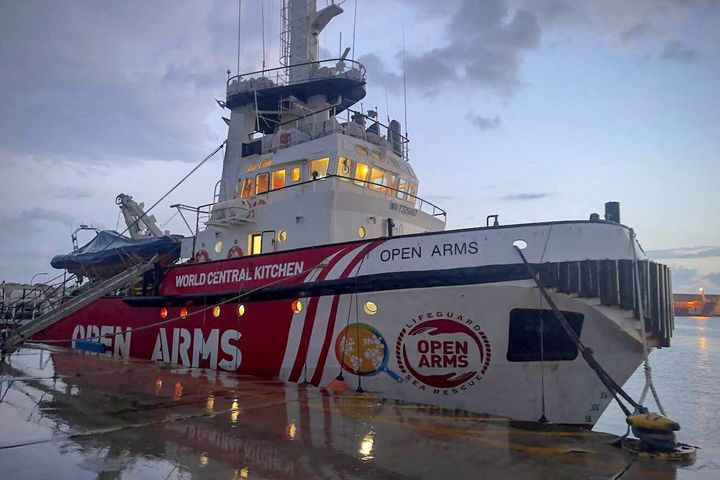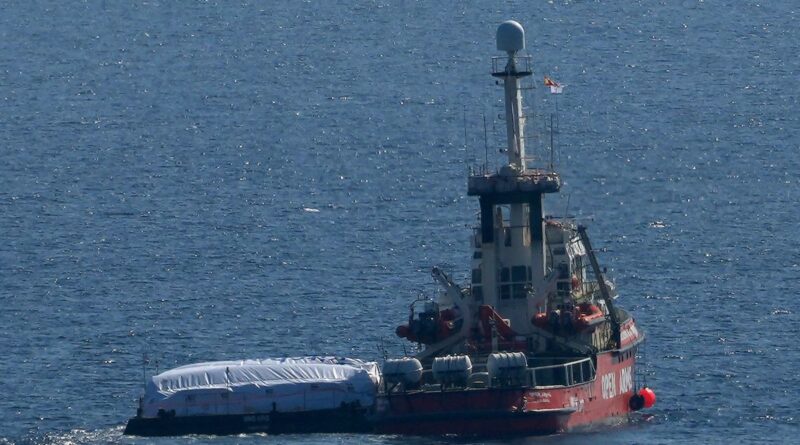Aid Ship Sails In New Sea Route To Gaza, Where Hundreds Of Thousands Face Starvation
RAFAH, Gaza Strip (AP) — An aid ship loaded with some 200 tons of food set sail for Gaza on Tuesday in a pilot program for the opening of a sea corridor to the territory, where the 5-month Israel-Hamas war has driven hundreds of thousands of Palestinians to the brink of starvation.
The push to get food in by sea — along with a recent campaign of airdrops into isolated northern Gaza — highlighted the international community’s frustration with the growing humanitarian crisis and its inability to get aid in by road.
The food on the aid ship was collected by World Central Kitchen, the charity founded by celebrity chef José Andrés, and is being transported by the Spanish aid group Open Arms. The ship departed from the eastern Mediterranean island nation of Cyprus and is expected to arrive in Gaza in two to three days.
The United States separately plans to construct a sea bridge near Gaza in order to deliver aid, but it will likely be several weeks before it is operational. President Joe Biden’s administration has provided crucial military aid for Israel while urging it to facilitate more humanitarian access.
WAR RAGES WITH NO END IN SIGHT

Amir Levy via Getty Images
The war, triggered by Hamas’ Oct. 7 attack on Israel, has killed over 31,000 Palestinians and driven most of Gaza’s 2.3 million people from their homes. A quarter of Gaza’s population is starving, according to the United Nations, because they cannot find enough food or afford it at vastly inflated prices.
Efforts by U.S., Qatar and Egypt to broker a cease-fire and hostage release before the Muslim holy month of Ramadan stalled as Hamas demanded that any temporary pause in the fighting come with guarantees for ending the war.
Israeli Prime Minister Benjamin Netanyahu has vowed to expand the offensive into the strip’s southern city of Rafah, where half of Gaza’s population has sought refuge, and to keep fighting until Hamas has been dismantled and all the captives it is holding have been returned.
The war threatens to spill across the Middle East as Iran-backed groups allied with Hamas trade fire with U.S. and Israeli forces. The Israeli military said around 100 projectiles were launched into Israel from Lebanon early on Tuesday, one of the biggest barrages since the war began. It appeared to be in response to Israeli airstrikes deep inside Lebanon the day before.
A pair of Israeli airstrikes Tuesday in northeastern Lebanon killed at least two people and wounded 20. Israel and Lebanon’s Hezbollah militant group have traded fire nearly every day since the war began.
The Israeli military said it also hit two targets in Syria used by Hezbollah.
‘OUR CHILDREN CAN’T FIND ANYTHING TO EAT’

Ashraf Amra/Anadolu via Getty Images
Aid groups say it is nearly impossible to deliver aid in much of Gaza because of Israeli restrictions, ongoing hostilities and the breakdown of order after the Hamas-run police force largely vanished from the streets.
Conditions are especially dire in northern Gaza, which has widespread devastation and has been largely cut off by Israeli forces since October. Up to 300,000 Palestinians are believed to have remained there despite Israeli evacuation orders, with many reduced to eating animal feed in recent weeks.
On Monday, the first day of the normally festive month of Ramadan, children with pots lined up at a charity kitchen in the urban Jabaliya refugee camp. Each was given a small portion of cooked carrots and sweet potatoes to break the dawn-to-dusk fast.
“Our children can’t find anything to eat,” said Bassam al-Haw, a volunteer. “No food, no water, no flour.”
Six humanitarian aid trucks brought aid directly into northern Gaza on Tuesday evening, coordinated by the Israeli military, which called it a pilot program to determine if additional food can be brought overland into the north. The military said the aid was checked at Israel’s Kerem Shalom crossing near Egypt and brought into Gaza at the 96th gate crossing, which is close to Kibbutz Be’eri.
The World Food Program delivered food into northern Gaza on Tuesday for the first time since Feb. 20, according to the United Nations. After being checked at Israel’s Kerem Shalom crossing, the military said six humanitarian aid trucks brought WFP aid into Gaza at the 96th gate crossing, close to Kibbutz Be’eri.
Aid groups have been struggling to get aid to the isolated area for months, although some private convoys have managed to deliver food. The World Health Organization and others delivered food, fuel and medical supplies Monday to two hospitals in the north, the U.N. said.
SEA ROUTE BRINGS PROMISE AND POTENTIAL PERIL

Proactiva Open Arms/AFP via Getty Images
The planned sea route has the support of the European Union, the U.S., the United Arab Emirates and others. The U.S. and other countries have also launched airdrops, but such efforts are costly and unlikely to meet the mounting needs.
The United Nations welcomed the inauguration of the sea route, but reiterated that transporting aid by land is the best way to get the most aid into Gaza.
The Open Arms ship is towing a barge loaded with food. Once it nears Gaza, two smaller vessels will tow the barge to a jetty being built by World Central Kitchen, which operates 65 kitchens across the territory, the group said. It plans to distribute the food in the north.
“The best security is to have enough food in Gaza,” Andres said. “We want to make sure nothing happens to anybody.”
Scores of Palestinians were killed last month during a chaotic aid delivery in the north organized by Israeli troops, who fired on the crowd. Israel said most of those killed were trampled to death, while Palestinian officials said most had been shot.
Israel, which controls Gaza’s coastline and all but one of its land crossings, says it supports efforts to deliver aid by sea and will inspect all cargo shipments.
European Commission President Ursula von der Leyen said it was the first time a ship had been authorized to deliver aid directly to Gaza since 2005 and that the EU would work with “smaller ships” until the U.S. completes work on its floating port.
Cypriot Foreign Minister Constantinos Kombos said during a visit to Beirut that there is a “mechanism” in place for larger shipments, with the goal of “a more systematic exercise with increased volumes.”
The war began when Hamas-led militants stormed into Israel in a surprise attack on Oct. 7, killing some 1,200 people, mostly civilians, and taking around 250 hostage.
Gaza’s Health Ministry says the Israeli offensive launched in response has killed at least 31,185 Palestinians. The ministry doesn’t differentiate between civilians and combatants in its count, but it has said women and children make up around two-thirds of the dead.
Israel blames the civilian death toll on Hamas because the militants fight in dense, residential areas. The military has said it has killed 13,000 Hamas fighters, without providing evidence.
A strike on a home in the central city of Deir al-Balah early on Tuesday killed 11 people from the same family, including four women and five children, according to hospital records and an Associated Press reporter who saw the bodies brought in.
___
Magdy reported from Cairo and Hadjicostis from Nicosia, Cyprus. Associated Press writers Tia Goldenberg in Tel Aviv, Israel; Raf Casert in Brussels and Abby Sewell in Beirut contributed to this report.
Support HuffPost
Our 2024 Coverage Needs You
Your Loyalty Means The World To Us
At HuffPost, we believe that everyone needs high-quality journalism, but we understand that not everyone can afford to pay for expensive news subscriptions. That is why we are committed to providing deeply reported, carefully fact-checked news that is freely accessible to everyone.
Whether you come to HuffPost for updates on the 2024 presidential race, hard-hitting investigations into critical issues facing our country today, or trending stories that make you laugh, we appreciate you. The truth is, news costs money to produce, and we are proud that we have never put our stories behind an expensive paywall.
Would you join us to help keep our stories free for all? Your contribution of as little as $2 will go a long way.
As Americans head to the polls in 2024, the very future of our country is at stake. At HuffPost, we believe that a free press is critical to creating well-informed voters. That’s why our journalism is free for everyone, even though other newsrooms retreat behind expensive paywalls.
Our journalists will continue to cover the twists and turns during this historic presidential election. With your help, we’ll bring you hard-hitting investigations, well-researched analysis and timely takes you can’t find elsewhere. Reporting in this current political climate is a responsibility we do not take lightly, and we thank you for your support.
Contribute as little as $2 to keep our news free for all.
Dear HuffPost Reader
Thank you for your past contribution to HuffPost. We are sincerely grateful for readers like you who help us ensure that we can keep our journalism free for everyone.
The stakes are high this year, and our 2024 coverage could use continued support. Would you consider becoming a regular HuffPost contributor?
Dear HuffPost Reader
Thank you for your past contribution to HuffPost. We are sincerely grateful for readers like you who help us ensure that we can keep our journalism free for everyone.
The stakes are high this year, and our 2024 coverage could use continued support. If circumstances have changed since you last contributed, we hope you’ll consider contributing to HuffPost once more.
Support HuffPost
Already contributed? Log in to hide these messages.

